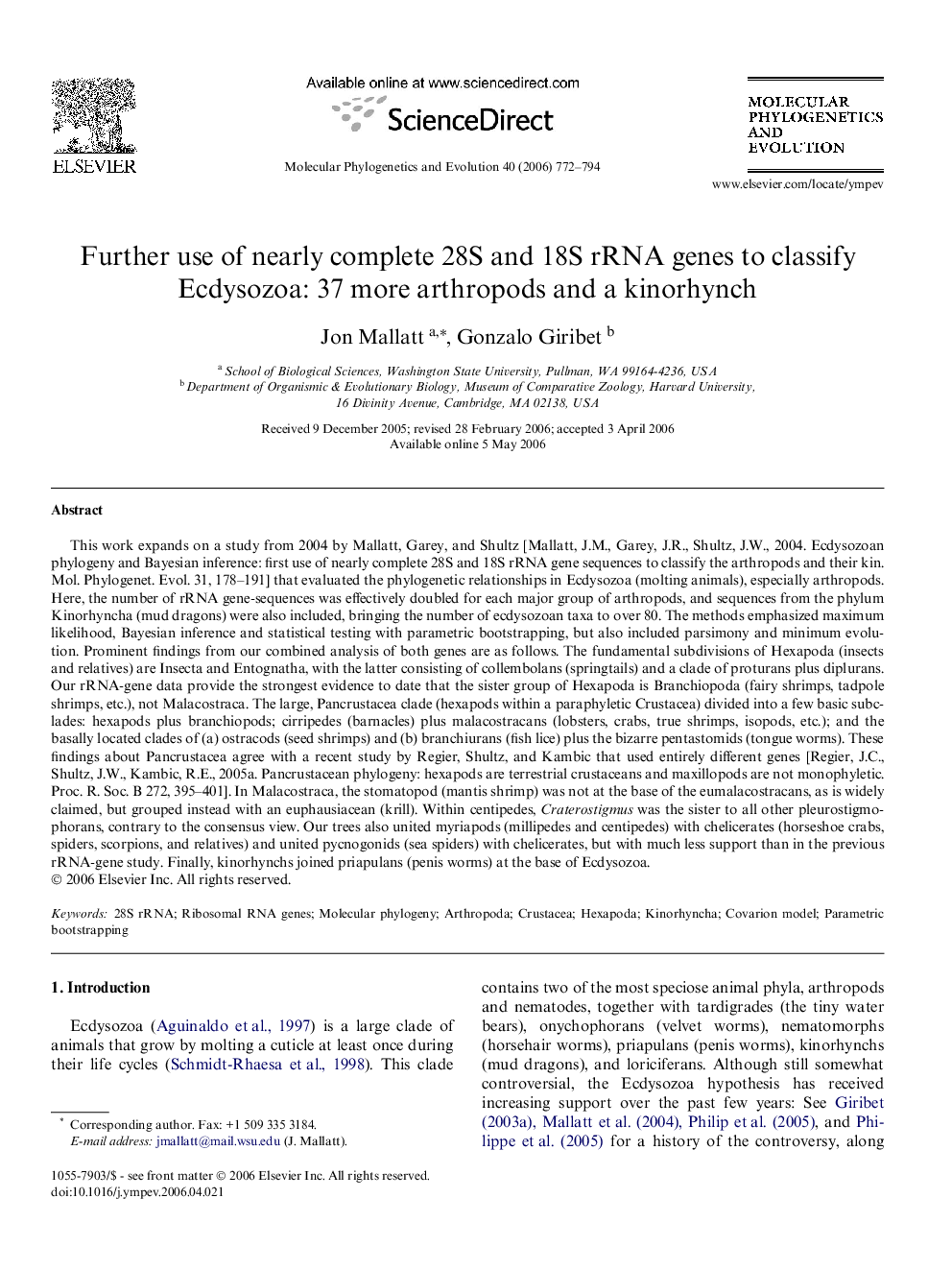| کد مقاله | کد نشریه | سال انتشار | مقاله انگلیسی | نسخه تمام متن |
|---|---|---|---|---|
| 2835749 | 1570828 | 2006 | 23 صفحه PDF | دانلود رایگان |

This work expands on a study from 2004 by Mallatt, Garey, and Shultz [Mallatt, J.M., Garey, J.R., Shultz, J.W., 2004. Ecdysozoan phylogeny and Bayesian inference: first use of nearly complete 28S and 18S rRNA gene sequences to classify the arthropods and their kin. Mol. Phylogenet. Evol. 31, 178–191] that evaluated the phylogenetic relationships in Ecdysozoa (molting animals), especially arthropods. Here, the number of rRNA gene-sequences was effectively doubled for each major group of arthropods, and sequences from the phylum Kinorhyncha (mud dragons) were also included, bringing the number of ecdysozoan taxa to over 80. The methods emphasized maximum likelihood, Bayesian inference and statistical testing with parametric bootstrapping, but also included parsimony and minimum evolution. Prominent findings from our combined analysis of both genes are as follows. The fundamental subdivisions of Hexapoda (insects and relatives) are Insecta and Entognatha, with the latter consisting of collembolans (springtails) and a clade of proturans plus diplurans. Our rRNA-gene data provide the strongest evidence to date that the sister group of Hexapoda is Branchiopoda (fairy shrimps, tadpole shrimps, etc.), not Malacostraca. The large, Pancrustacea clade (hexapods within a paraphyletic Crustacea) divided into a few basic subclades: hexapods plus branchiopods; cirripedes (barnacles) plus malacostracans (lobsters, crabs, true shrimps, isopods, etc.); and the basally located clades of (a) ostracods (seed shrimps) and (b) branchiurans (fish lice) plus the bizarre pentastomids (tongue worms). These findings about Pancrustacea agree with a recent study by Regier, Shultz, and Kambic that used entirely different genes [Regier, J.C., Shultz, J.W., Kambic, R.E., 2005a. Pancrustacean phylogeny: hexapods are terrestrial crustaceans and maxillopods are not monophyletic. Proc. R. Soc. B 272, 395–401]. In Malacostraca, the stomatopod (mantis shrimp) was not at the base of the eumalacostracans, as is widely claimed, but grouped instead with an euphausiacean (krill). Within centipedes, Craterostigmus was the sister to all other pleurostigmophorans, contrary to the consensus view. Our trees also united myriapods (millipedes and centipedes) with chelicerates (horseshoe crabs, spiders, scorpions, and relatives) and united pycnogonids (sea spiders) with chelicerates, but with much less support than in the previous rRNA-gene study. Finally, kinorhynchs joined priapulans (penis worms) at the base of Ecdysozoa.
Journal: Molecular Phylogenetics and Evolution - Volume 40, Issue 3, September 2006, Pages 772–794